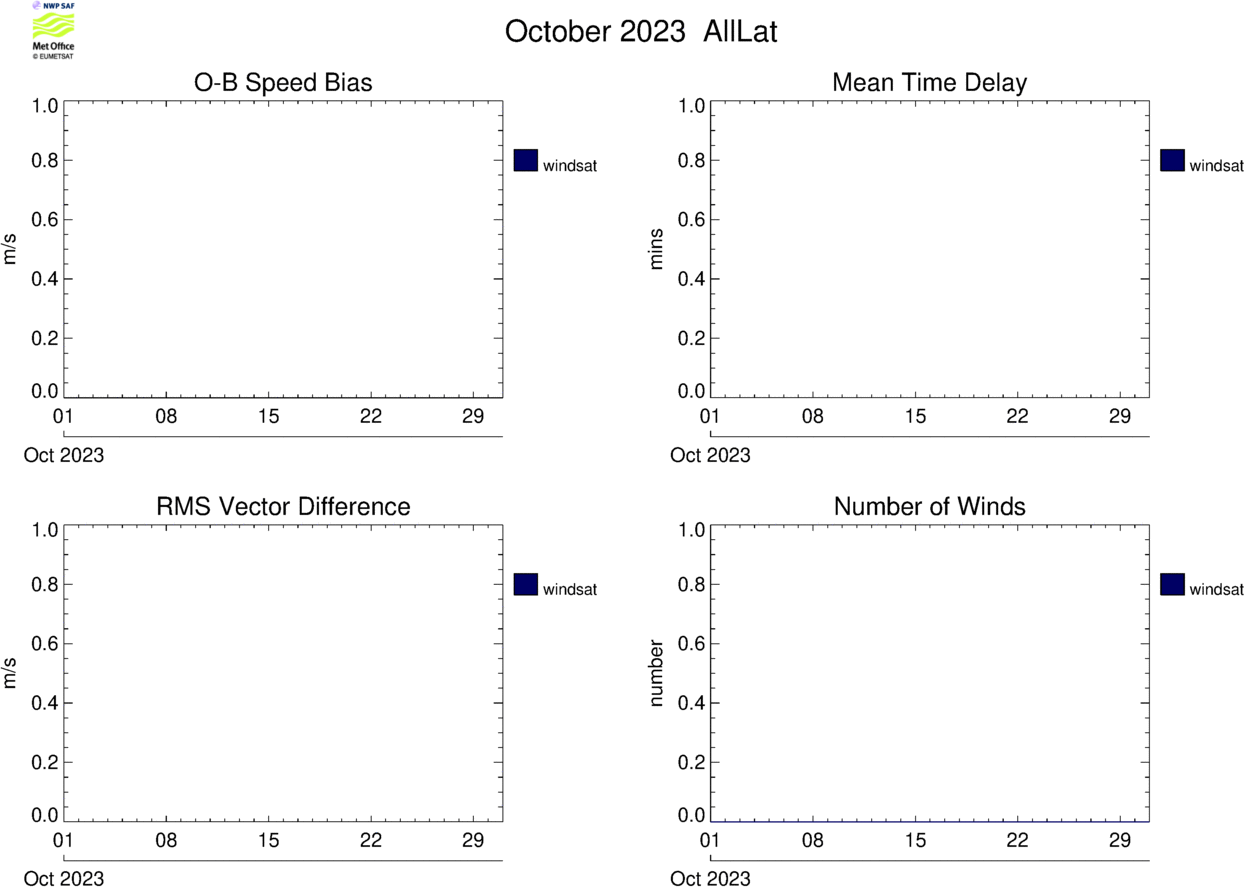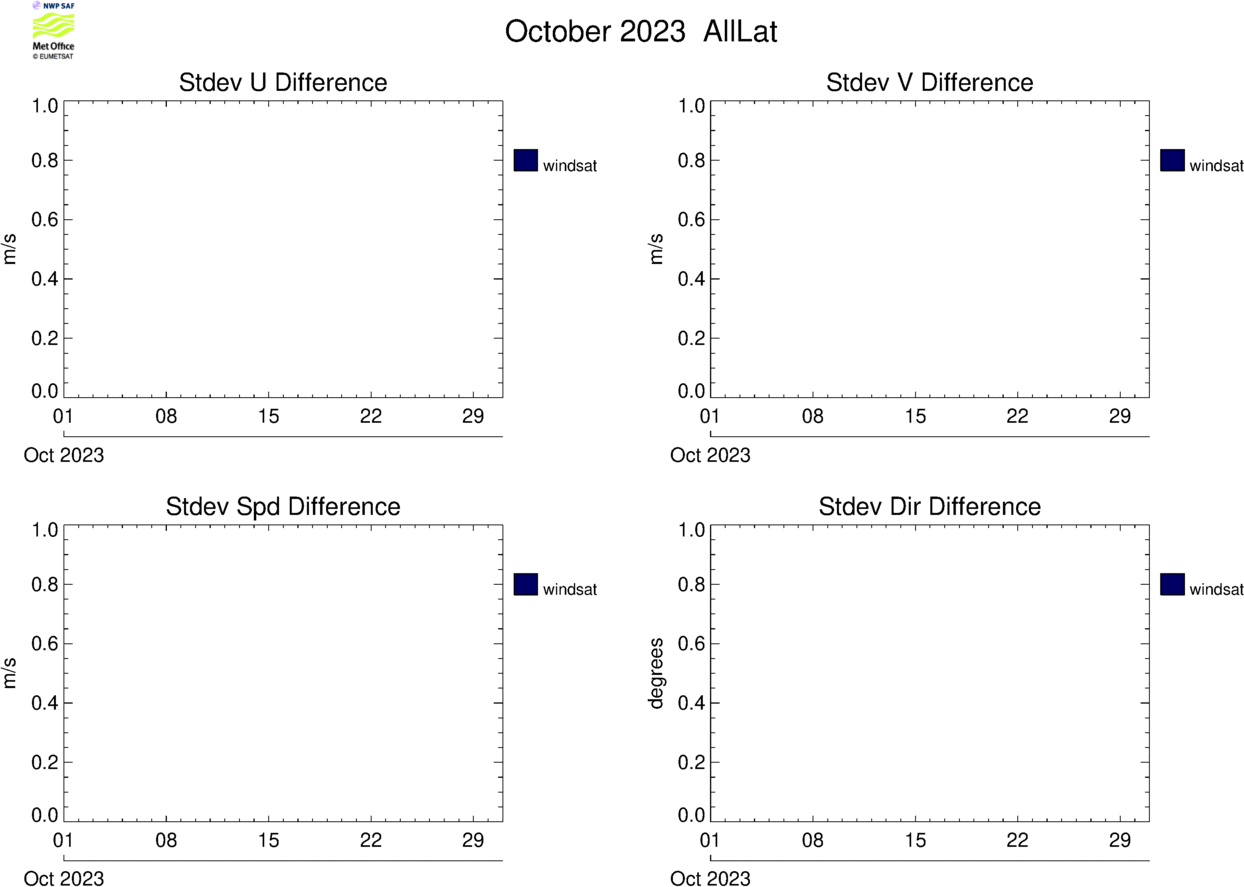WindSat
WindSat is the primary payload of the Coriolis satellite which was launched on 6 January 2003. WindSat, the first space-borne multifrequency polarimetric microwave radiometer, has been developed by the US Naval Research Laboratory (NRL) to demonstrate that ocean surface wind vectors can be derived from space using a passive instrument. The resolution of the winds is defined by the lowest frequency channel. Although not a scatterometer, it is useful for monitoring purposes to treat it as such due to the ambiguity present in the wind vectors.
WindSat data has been assimilated in the Met Office global model since 25 November 2008 and the NAE since 2 November 2010.
WindSat Environmental Data Record (EDR) files containing the retrieved wind vectors and associated quality flags are received at the Met Office from NRL. These are then processed in-house to produce a level 2 BUFR product. For more information on how WindSat is used at the Met Office (including the version number of the EDRs) see the Use in NWP pages.
Latest Data (updated every 6 hours)
00 UTC |
06 UTC |
12 UTC |
18 UTC |
|
| Data Coverage |  |
 |
 |
 |
| Map O-B Speed Bias |  |
 |
 |
 |
| Map O-B Vector Difference |  |
 |
 |
 |
| Map Observed Speed |  |
 |
 |
 |
| Map Background Speed |  |
 |
 |
 |
| Speed 2D Histogram |  |
 |
 |
 |
| Direction 2D Histogram |  |
 |
 |
 |
| O-B Speed Bias By Crosstrack Cell |
 |
 |
 |
 |
| O-B Direction Bias By Crosstrack Cell |
 |
 |
 |
 |
Last 30 days (updated once per day)
| Time Series I |  |
| Time Series II |  |
